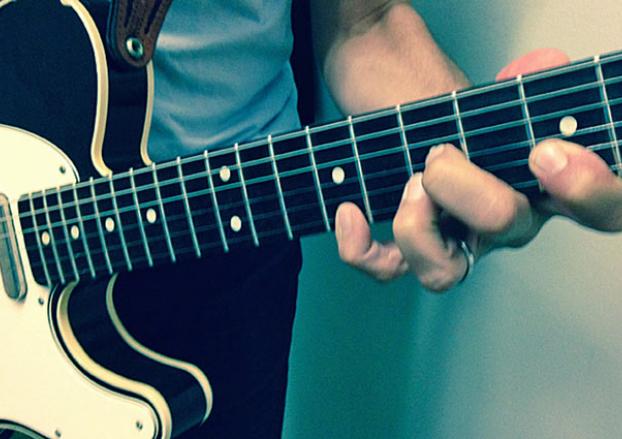A Brief History of Delay, and a Unique Way to Use It

Delay is one of the coolest and most heavily used effects in rock.
Everyone from AC/DC to Zeppelin has used it in one form or another, but that doesn’t mean you noticed. Because while delay in its simplest term is an audio effect that plays back a signal after a period of time, how that time is measured and how that signal is played back can vary greatly. The delay effect can range from a single echo to a seemingly infinite repeating decaying echo, and everything in between.
Nowadays when a guitarist wants to add this effect, they stomp a pedal and presto, delay on. But this hasn't always been the case. In the Fifties—when delay first appeared on the music scene—it was created with tape loops on a reel to reel magnetic recorder.
Shortening or lengthening the loop of the tape altered the nature of the delay. Back then delay wasn’t even used by rockers, it was used by avant-garde composers like Pierre Schaeffer, who many believe was the first musician to use the effect.
Schaeffer was a Frenchman with a penchant for philosophy, writing and all things intellectual. In the early Fifties he experimented with recording music using magnetic tape which allowed him to use—among other then—unheard of effects—delay. Schaffer created sound collages that often lacked discernable melody or rhythm.
While his music would probably bore or confuse your average rock aficionado, he did unknowingly pave the way for what was to become one of rock guitars’ most celebrated effects. Indeed in 1959 another unsung genius—a man named Mike Battle—took Schaeffer's tape looping delay effect and applied it in the invention of the first true delay pedal: the Echoplex.
Unlike using the cumbersome magnetic tape technique, the Echoplex had vacuum tubes and a moving head which allowed users to change the delay time with relative ease. Suddenly, every guitar player on the planet was using them, including Jimmy Page, Syd Barrett, Duane Allman and later, Brian May, Joe Satriani and the great Edward Van Halen.
All the latest guitar news, interviews, lessons, reviews, deals and more, direct to your inbox!
The Seventies—when electronics became smaller and more affordable to the masses—brought forth the era of the inexpensive digital delay unit. This small pedal—which almost every guitarist owns in one form or another—functions by sampling the input signal through an analog to digital converter then passing the signal through processors, and finally playing back the recorded audio at the speed, time and decay level specified by the user.
What does all that mean? Awesome guitar effects that are virtually as limitless as the delay you’d get it you had every dial on your pedal cranked right.
One under-utilized possibility is setting the delay to give you just one echo as an eighth note. It’s not a tasty lick, but it is a cool idea. And I guarantee if you try it you’ll find a way to work it into your own riffs and make them tastier. Don’t delay!
